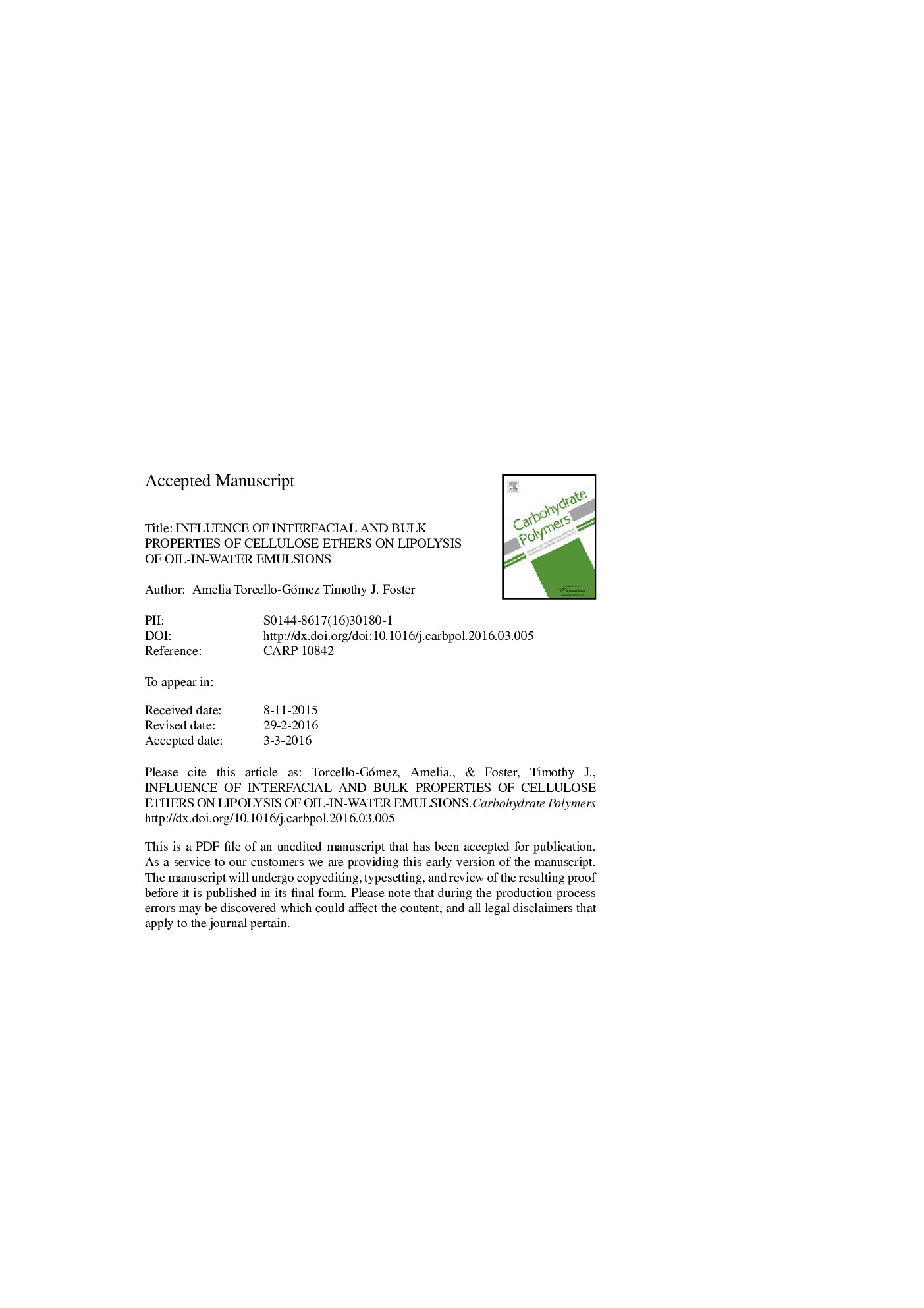| Article ID | Journal | Published Year | Pages | File Type |
|---|---|---|---|---|
| 7786170 | Carbohydrate Polymers | 2016 | 18 Pages |
Abstract
Cellulose ethers are usually used as secondary emulsifiers. Different types of commercial hydroxypropylmethylcellulose (HPMC) have been used here as the main emulsifier of oil-in-water emulsions to probe their impact on the lipid digestibility under simulated intestinal conditions. The droplet size distribution and ζ-potential of the emulsions subjected to in-vitro lipolysis have been compared with that of control samples (non-digested). The lipolysis has been quantified over time by means of the pH-stat method. The displacement of HPMC from the oil-water interface by bile salts has been assessed by interfacial tension technique. Results show that HPMC delays the lipid digestion of emulsions regardless of the Mw and methoxyl content. The destabilisation of emulsions under intestinal conditions as well as the resistance of HPMC to be displaced from the emulsion interface by bile salts may contribute to this feature. This provides new insights into the mechanisms whereby dietary fibre reduces fat absorption.
Related Topics
Physical Sciences and Engineering
Chemistry
Organic Chemistry
Authors
Amelia Torcello-Gómez, Timothy J. Foster,
